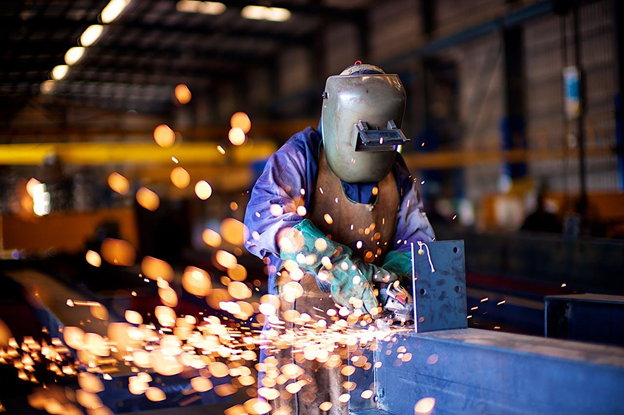
Welding, especially for extended periods, presents both physical and mental challenges. Physically, the body endures strain from holding positions and handling heavy equipment. Mentally, maintaining concentration over long stretches can be taxing.
Additionally, the repetitive nature of welding can lead to fatigue, increasing the risk of errors. By following the advice shared here, you can improve your performance, ensure safety, and produce high-quality welds.
Physical and Mental Preparation
Proper preparation is key to staying focused and efficient during long welds. Start with body positioning. Ensure you’re comfortable and have a stable stance, as this reduces strain on your muscles and joints. Breathing techniques also play a vital role.
Regular exercise outside of work strengthens your core muscles, providing the stamina required for long welding sessions and reducing the risk of injury. Consider incorporating stretches and yoga into your daily routine to increase flexibility and improve posture.
Practice deep, steady breaths to maintain a calm and focused mind. Mentally, set clear goals for each welding session and visualize the steps required to achieve them. This mental rehearsal can enhance concentration and reduce anxiety.
Use the Right Protective Gear
Proper protective gear acts as the first line of defense against common welding hazards such as UV radiation, sparks, and hot metal. Invest in high-quality gloves, flame-resistant clothing, and most importantly, a reliable welding hood.
A pancake welding hood, for instance, offers excellent protection and comfort, allowing you to maintain focus without distractions. A high-quality welding helmet is crucial, and models with features like variable shade settings, a larger viewport, and grind mode can provide both enhanced protection.
Similarly, gloves should offer a balance of dexterity and heat resistance, allowing precision without sacrificing safety. Flame-retardant clothing is also vital, with materials that can withstand high temperatures and prevent burns.
Additionally, steel-toed boots with rubber soles offer necessary protection from heavy objects and slippery surfaces.
Optimize Your Workstation
A well-organized workstation can significantly impact your efficiency. Arrange your tools and materials within easy reach to minimize unnecessary movements. Ensure adequate lighting to avoid eye strain and improve visibility.
Consider investing in ergonomic equipment that supports a natural posture and reduces physical strain. Incorporating organizational systems, such as pegboards or toolboxes with designated compartments, keeps tools orderly and reduces time wasted searching for equipment.
Labeling bins and drawers can further streamline the process of finding and returning tools. Implementing anti-fatigue mats can alleviate stress on feet and joints, especially during long work periods.
The Importance of Breaks
Scheduled breaks are not merely pauses in productivity; they are strategic intervals that preserve the longevity of high performance in welding tasks. These short intervals also serve to clear mental fog, sharpen focus, and increase overall work accuracy.
Moreover, breaks foster creativity and problem-solving by offering a momentary detachment from the task, which can lead to insight and potentially innovative solutions upon returning to work.
The practice of mindfulness during breaks, through activities like deep breathing or a short walk, can make each return to the welding station as productive as the start of the session.



